Requirements Management: The Master Guide
- Arunabh Satpathy
- November 22, 2024
- 16 minutes

Requirements management is how teams gather, analyze, track, and communicate stakeholder needs throughout a project lifecycle to ensure that the project meets those needs. Teams can manage requirements in many ways like documents, diagrams, and purpose-built requirements management software tools.
A well-executed requirements management process helps teams to:
- Detect errors early: Early error detection with sound requirements management techniques has massive consequences on overall project cost. In software development, fixing an error after product release costs up to 5x as much as detection during design.
- Foster communication: Requirements management helps to foster communication with stakeholders from the start of a project. This helps keep the project on track even as stakeholder needs evolve over time.
- Meet stakeholder needs: Requirements management helps the project to meet the needs of both internal and external stakeholders.
To reap the benefits of requirements management, teams must follow a requirements management plan that outlines how requirements will be collected, tracked, and managed during a project. The plan also lays out all the steps to requirements management, which include:
- Project planning
- Requirements gathering/elicitation
- Requirements analysis
- Documentation of requirements
- Prioritization of requirements
- Validation of requirements
- Establishing traceability
- Change management
- Ongoing feedback and monitoring
This article gives you all the tools you need to get up to speed with requirements management including its definition, its importance, its steps, benefits and challenges, and the right tools and techniques for project success.
Table of Contents
1. What is Requirements Management (Definition and Benefits)?
In product development, a requirement is a specific condition, capability, or quality that a product, system, or process must meet to satisfy stakeholder needs and project objectives. Requirements management is the structured process of capturing, analyzing, prioritizing, and tracking these requirements throughout the project lifecycle.
A software development project can have hundreds of requirements that create a foundation for all design, development, and testing activities.
Requirements management ensures your project meets its goals successfully. It also empowers your teams to make changes on the fly, collaborate seamlessly, and maintain traceability to achieve project success.
There is a direct correlation between stakeholder satisfaction with requirements management and overall IT success.
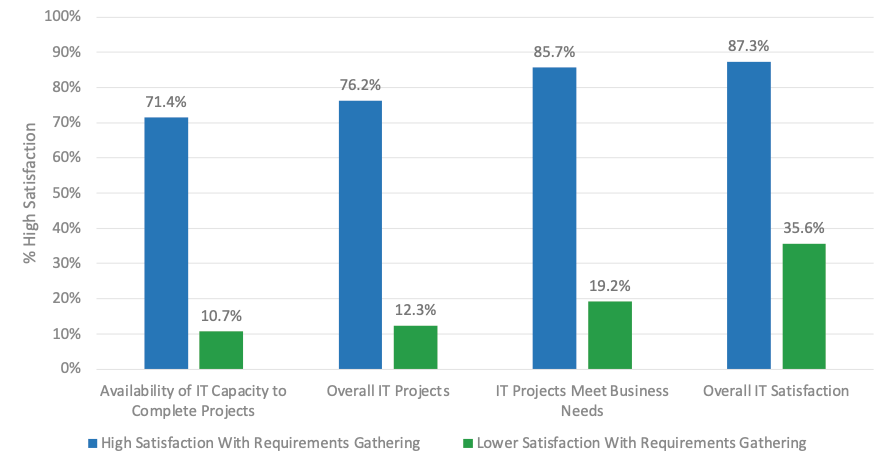
On the flip side, research shows poor requirements management lead to a 68% higher chance of project failure compared to effective requirements practices.
Having a team that understands requirements management and its tools reliably makes the difference between successful and failed projects.
a. What are the Different Types of Requirements in Project Management?
More complex projects naturally have more requirements, but it’s equally important to know the different types of requirements in a project, which include:
- Functional requirements: These describe how a solution should behave.
Example: “The e-commerce system allow users to add items to a shopping cart and complete a purchase transaction.” - Non-functional requirements: These describe quality requirements like security, availability, and usability.
Example: “The system must be available 99.9% of the time during business hours.” - Performance requirements: These can be defined under functional requirements but can also be considered a more detailed breakdown of performance requirements like response speed, storage capacity, and execution time.
Example: “The web application must load within 3 seconds for 95% of users with a standard broadband connection.” - Interface requirements: These describe interfaces like user, software, hardware, system, and communication interfaces.
Example: “The mobile app must integrate with the iOS biometric authentication system for user login.” - Stakeholder requirements: These represent stakeholder needs and how they interact with a business solution.
Example: “The marketing team requires a dashboard to track real-time sales data and customer demographics.” - Regulatory requirements: These represent the regulatory needs that a product or service must comply with to successfully launch in its intended markets. Regulatory requirements can vary widely depending on industry and market location.
Example: “The application must comply with ASPICE regulations for in-car software.”
Project aim and scope determine the types and number of requirements you will use. For instance, software that runs fully on the backend of a remote server will typically have fewer interface requirements than a mobile video game app.
With such a large number and variety of requirements in modern project and service development, you need tools, methodologies, and professionals to manage them. But first, we must discuss why requirements management is important in the first place.
2. Why is Requirements Management Important for Project Success?
Requirements management is becoming increasingly important in most industries as the complexity of products and services increases. It is used for a diverse range of industries, including aerospace, defense, automotive, healthcare, medical devices, software development, construction and more.
For instance, in the medical device manufacturing industry, research shows that regulations increased by 64% between 2015 and 2022.
Software complexity is also growing constantly, leading to calls from developers to create systems to reduce quality degradation.
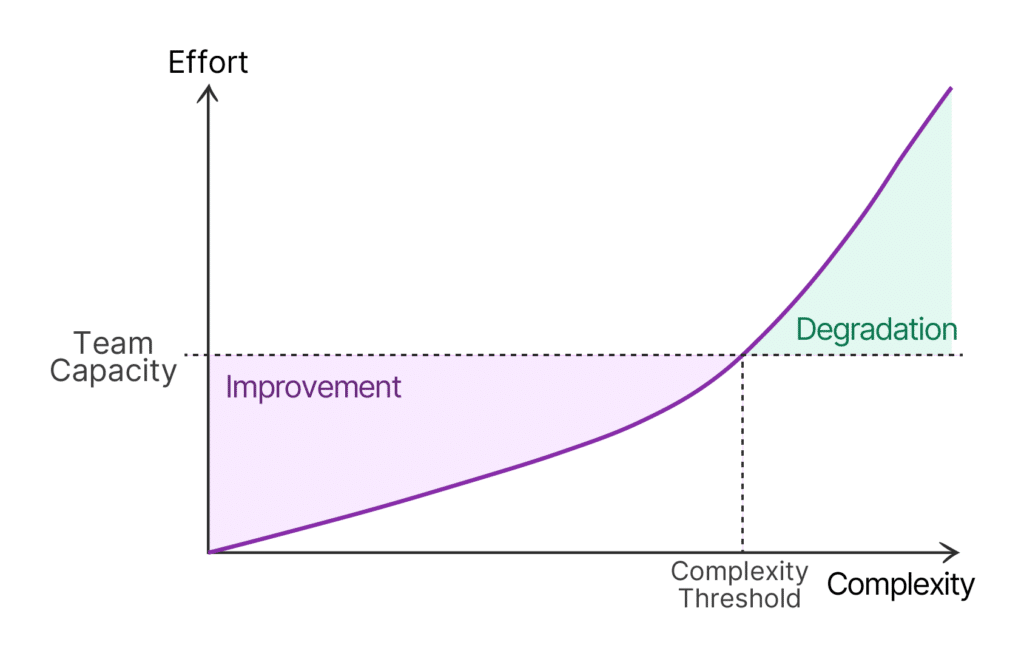
Requirements management methodologies are applied in a wide range of industries because of its many benefits including:
Reducing Project Failures: Effective requirements management reduces or prevents project failures by ensuring clear communication and documentation of project goals. According to the Project Management Institute (PMI), 37% of organizations reported inaccurate requirements gathering as the primary reason for project failure.
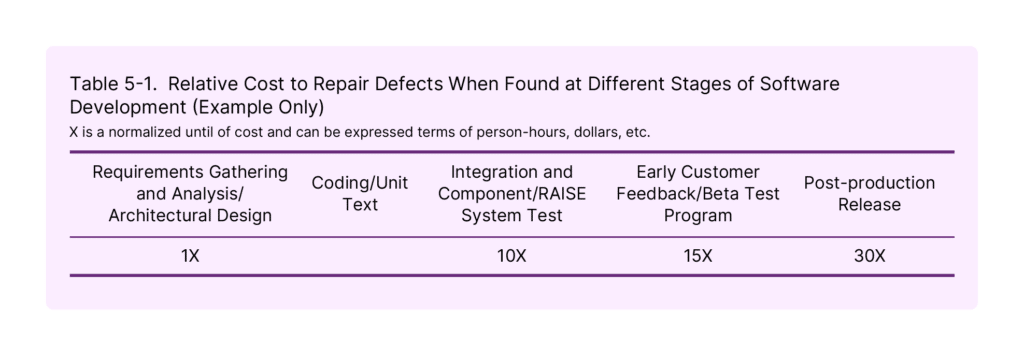
- Cost Reduction: Proper requirements management can significantly reduce project costs. A study found that only 45% of features in IT products are used by end users. Effective requirements management can prevent the development of irrelevant features, which can be costly.
- Improving Quality: Clearly defining and managing requirements throughout the project lifecycle improves the overall quality of deliverables and increases overall customer satisfaction.
- Decreasing Project Duration: Effective requirements management reduces time to project completion, rework, and scope creep. Requirements rework alone can cost between 5% to 20% of the contract value in construction and engineering projects.
- Risk Mitigation: Teams can easily identify and address potential risks early in the project lifecycle. This proactive approach can prevent costly issues from arising later in development.
- Stakeholder Communication: Requirements management aligns all stakeholders to a shared understanding of project goals and expectations. It does so through consistent baselining and reviews to keep up with evolving project requirements.
- Facilitating Traceability: Requirements management enables better traceability between project work items, which makes it easier to track the impact of changes across the entire project lifecycle. Teams can perform traceability analysis either through matrices or using artificial intelligence.
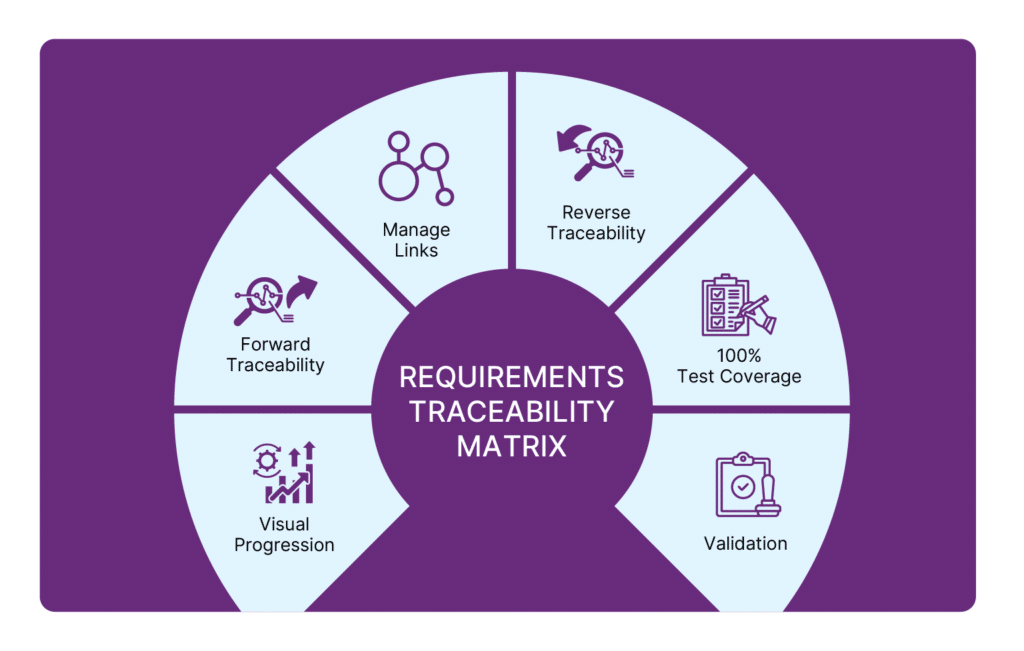
By investing in robust requirements management processes, organizations can improve their project outcomes and deliver greater value to stakeholders. With such a wide-ranging impact on project outcomes, it cannot be covered within one article.
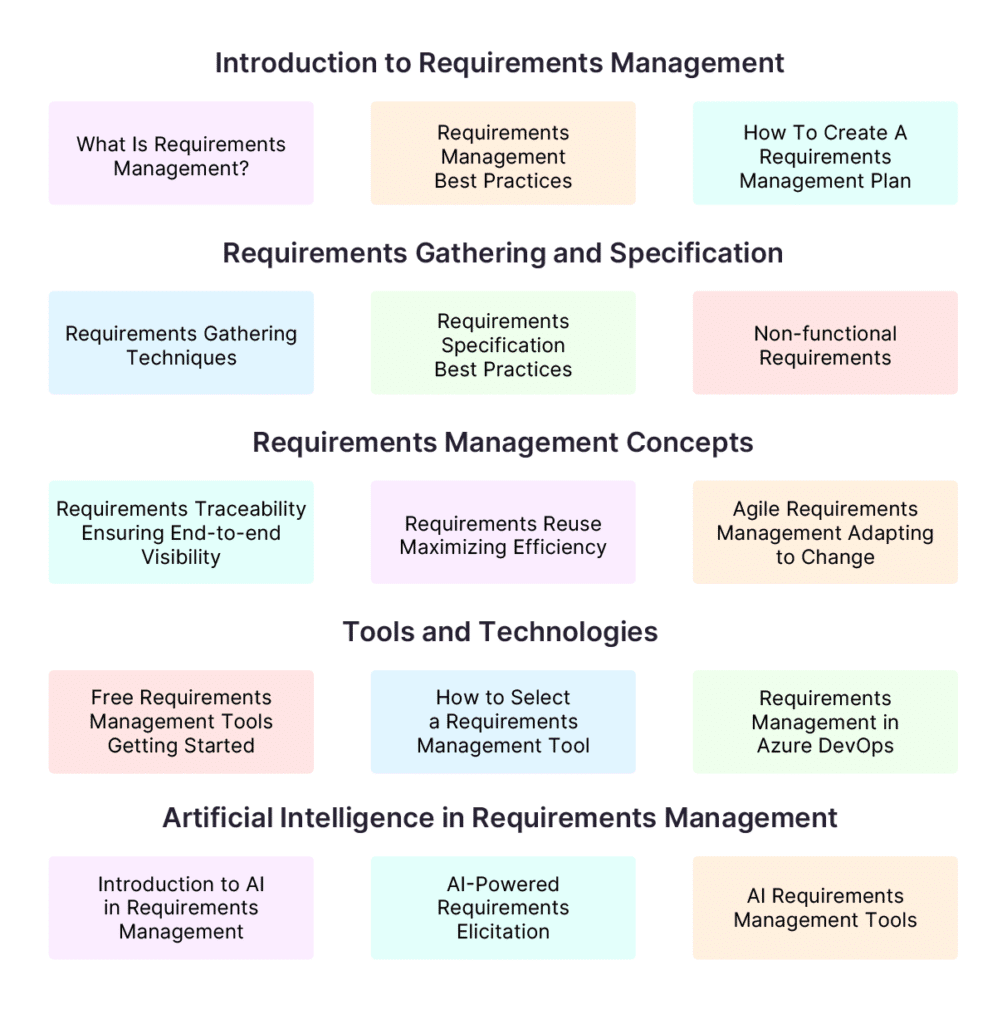
However, we have discussed these elements of requirements management in different parts of these series:
- AI Requirements Management
- AI Requirements Elicitation
- Agile Requirements Management
- Requirements Management in Azure DevOps
- How to Select a Requirements Management Tool
- Requirements Gathering
- Non-functional Requirements
- Free Requirements Management Tools
- Requirements Specification
- Requirements Traceability
- Requirements Management Best Practices
Only a skilled group of individuals can execute project requirements management to successfully meet business needs. Different professionals have different roles to play in this process, as discussed below.
3. What are the Key Roles in Requirements Management?
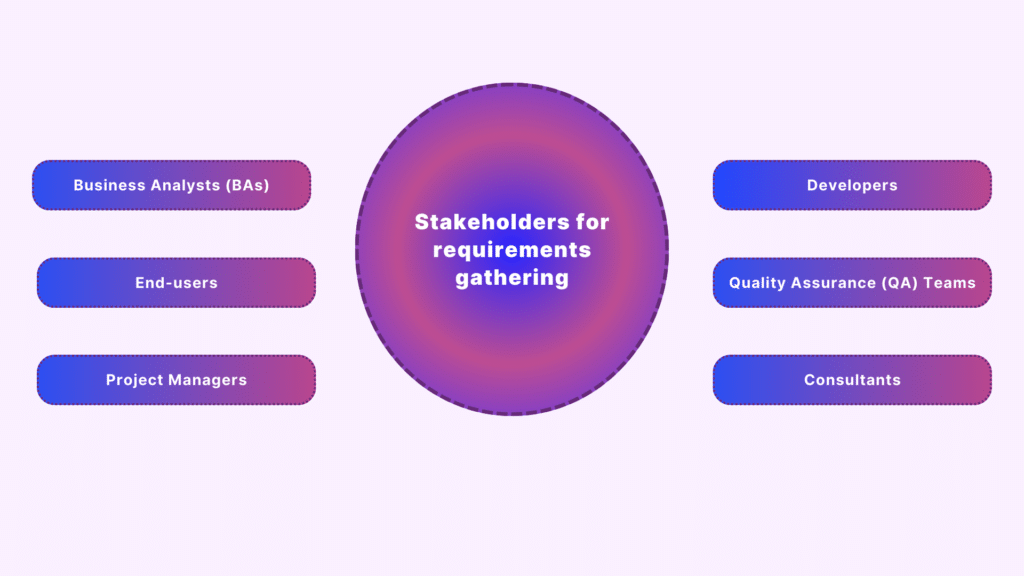
The professionals most responsible for requirements management of a project are project managers and business analysts, though everyone in the production chain is responsible for good requirements management to some extent. This is complicated by the fact that the specific roles and titles can vary depending on the organization and project structure. Here’s an in-depth dive into how various professionals are involved in requirements management:
a. Product Managers/Product Owners
Product managers and product owners lead the gathering and prioritizing of stakeholder needs while keeping business goals and smooth communication between teams and stakeholders in view.
b. Business Analysts
Business analysts play an equally important role by bringing their elicitation, analysis, documentation, and editing skills to bear on stakeholder requirements. Their role goes well beyond merely collecting requirements.
Other roles that are often involved in the requirements management process include:
c. Developers
These are especially important in the development of projects with a software component. Developers help create software-specific needs necessary for software requirements management.
d. Designers
Designers bring a unique end-user related perspective that help create design-related requirements solutions.
e. Quality Assurance
QA professionals in software development have the unique skill of verifying the result of collected requirements in the form of a product. An overly expensive QA process may indicate poor requirements specification earlier on in a project. According to many studies, testing and rework can account for up to 50% of the total cost of development effort.
f. Executives
As the people responsible for any company activity at the highest level, executives directly or indirectly approve of the requirements management project.
g. Miscellaneous Stakeholders
These go beyond internal stakeholders like other professionals. They also include end users, business partners, consultants, third-party suppliers, and other groups necessary to determine requirements.
With a combination of tools and techniques, requirements management professionals can successfully complete projects. However, complex projects are best executed when following all the steps for managing requirements.
4. What are the Steps to Managing Requirements?
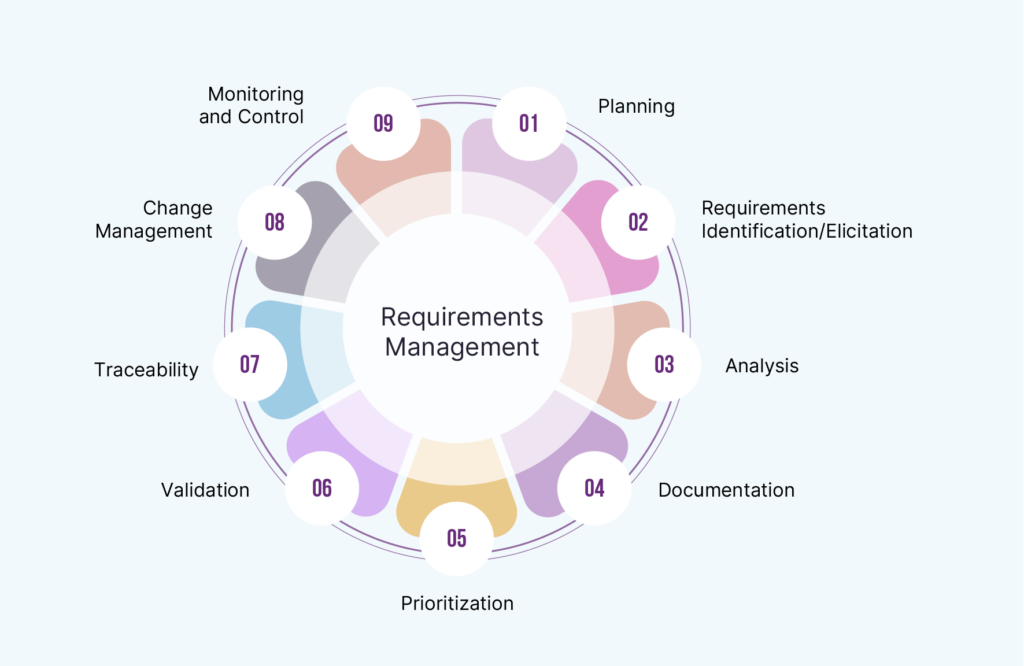
Requirements management aims to ensure a project meets all objectives successfully. Therefore, it provides a strategy for preventing errors during product development by monitoring and tracking changes in needs and requirements. It also fosters communication between stakeholders throughout a project’s engineering lifecycle.
While documents manage requirements, complex products or systems depend on trusted requirements management solutions and tools to mitigate risks. That being the case, requirements management often involves four phases:
a. Requirements Planning
A Requirements Management Plan (RMP) is a document that outlines how project requirements will be defined, documented, analyzed, tracked, and managed throughout the project lifecycle. It is created alongside the primary project plan and serves as a guide for stakeholder engagement, change control, and requirement prioritization.
According to Todd Loeb, a consultant, speaker, and author on project management, “Without a requirements management plan, your stakeholder requirements can get lost. [The document] really walks you through how your project requirements are going to be managed throughout the lifecycle of the project.”
b. Requirements Elicitation and Identification
Developing the project requirements involves collecting all known requirements from previous projects, stakeholders, and industry knowledge. Elicitation and identification involve a few steps:
- Stakeholder Identification: Identify all relevant stakeholders, including end-users, third-party partners, managers, and subject matter experts.
- Conventional Techniques: Use a combination of methods such as interviews, surveys, existing FAQ question sets, workshops, observation, and increasingly AI tools.
- Unorthodox techniques: You can use non-conventional sources of requirements like emails, rough notes, and diagrams to collect requirements as well.
- Iterative Process: Treat elicitation as an iterative process that involves gathering, refining, and validating requirements throughout the project lifecycle.
c. Requirements Analysis and Prioritization
Include methods for prioritizing requirements based on business value and technical feasibility. Teams can use techniques like the MoSCoW method and SWOT.
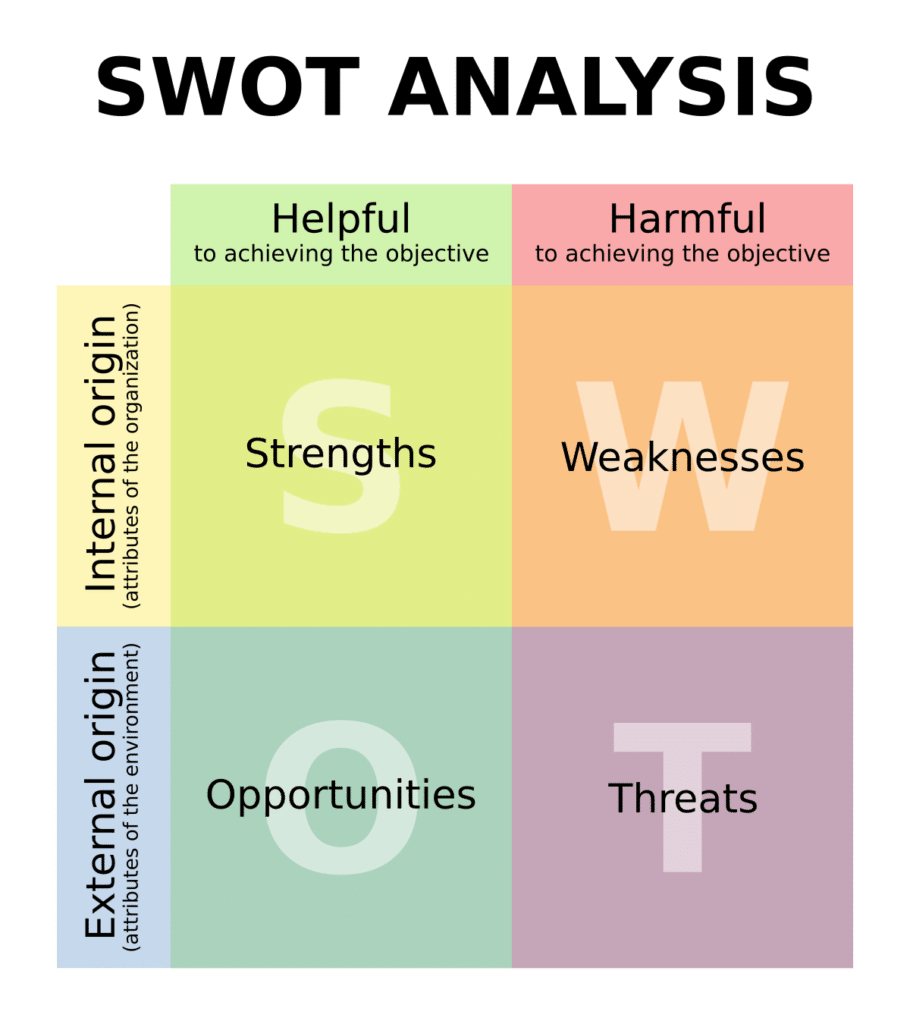
Modern AI analysis tools can help you rank tools by the quality of their writing as well as their prioritization given a set of business needs.
d. Requirements Documentation
Documentation is an easy-to-miss part of requirements management, but it is vital for clear communication, version control, and ensuring traceability throughout the project lifecycle. Because of this, tools like Smart Docs that integrate into your workflow, allow you to create formatted requirements documents, and automatically update within your organization are critical.
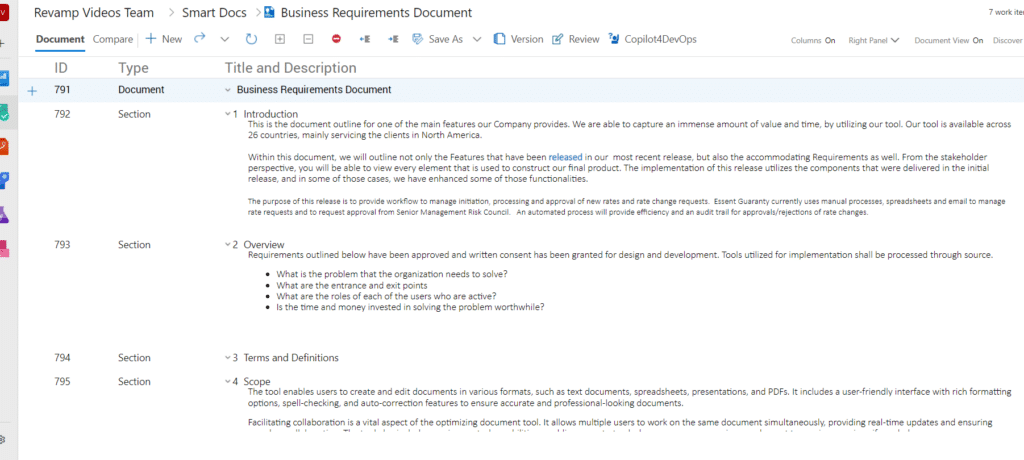
But in large organizations, documents can number in the thousands. In such cases, a Document Management System that allows uploading, downloading, versioning, and foldering of documents is very useful.
e. Requirements Validation, Review, and Verification
When verifying the product design, you must ensure you have met all the goals. Reviews, validation, and verification of requirements enhance project quality by streamlining approvals and reducing errors early in the process. They help align stakeholder needs, improve traceability, facilitate compliance, and accelerate development cycles. These benefits collectively lead to more successful projects. Activities like user testing validate the product functions per end-user needs and requirements.
f. Requirements Traceability
Traceability is described as “the ability to describe and follow the life of a requirement, in both a forward and backward direction” by Gotel and Finkelstein at the Imperial College of Science, Technology and Medicine, London.
Traceability helps companies in several ways, including better quality outcomes, reduced defects, reduced liability, and cost savings.
Traceability involves the linking of work items to other work items like test cases, requirements, use cases, design elements, and source code, using unique identifiers and traceability matrices.
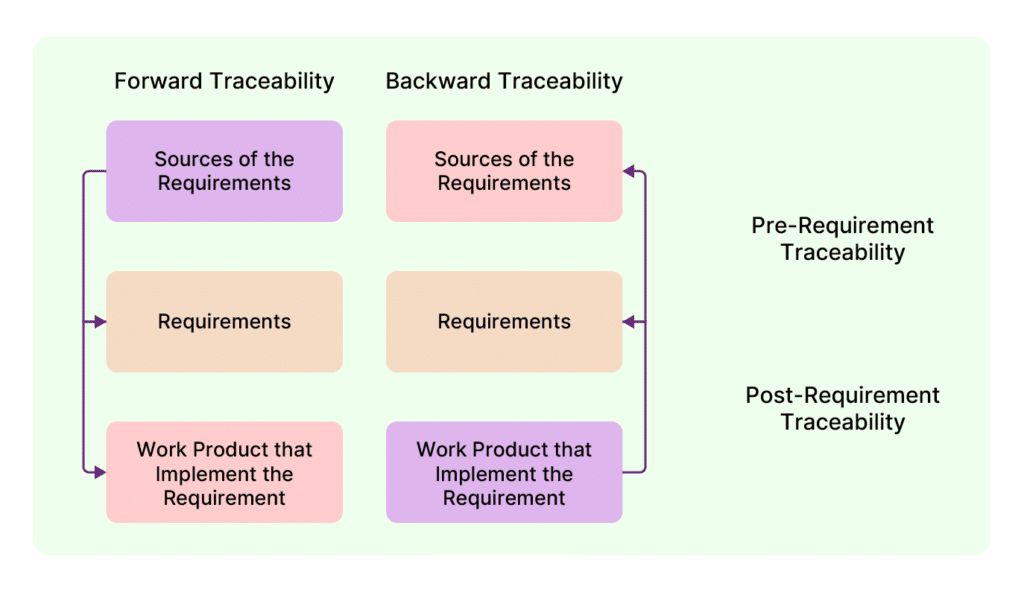
The best requirements traceability software give teams options like multiple traceability matrices, end-to-end traceability, and bidirectional traceability natively integrated within an industry standard tool like Azure DevOps.
g. Change Management
Projects evolve as they near completion. In some industries like software development using methodologies like DevOps, projects are continuously updated. Requirements management is an ongoing process, so you need a process to gather end-user data and manage required changes after product release. It ensures steady and controlled adaptation to evolving stakeholder needs and project circumstances.
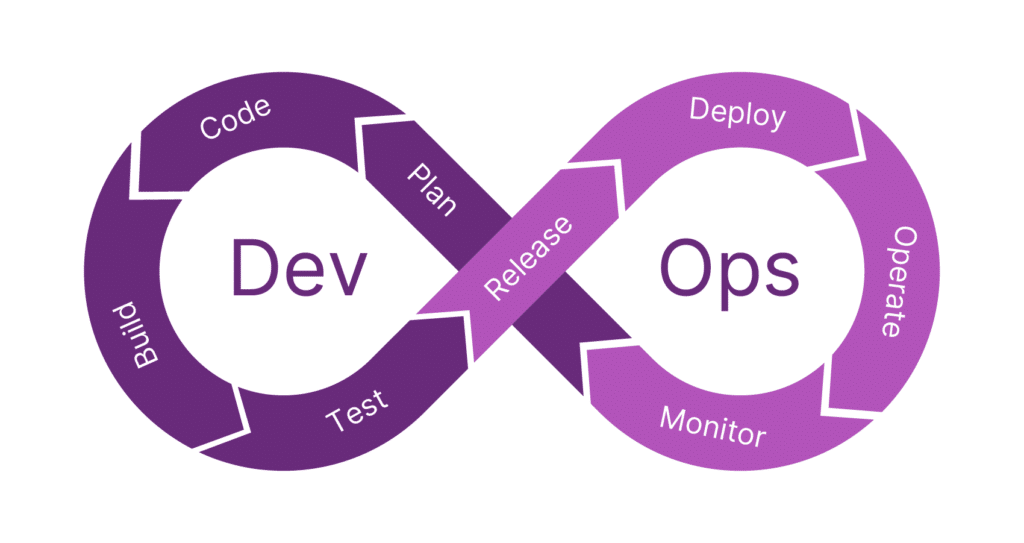
Today, modern change management involves continuous real-time collaboration and traceability tools which facilitate continuous requirements gathering, analysis, and adaptation throughout the project lifecycle.
5. What are the Challenges of Requirements Management?
While requirements management offers significant benefits, it also comes with its own set of challenges that organizations must address:
- Stakeholder alignment: Ensuring all stakeholders agree on requirements and priorities.
- Scope creep: Addressing the needs of all stakeholders can rapidly balloon the scope of the project, which can rapidly increase cost. Changes in the scope of a design can be 50% of the rework in a project.
- Ambiguity: Clearly defining requirements to avoid misinterpretation. Using best practices in requirements gathering and AI elicitation can help you reduce requirements ambiguity.
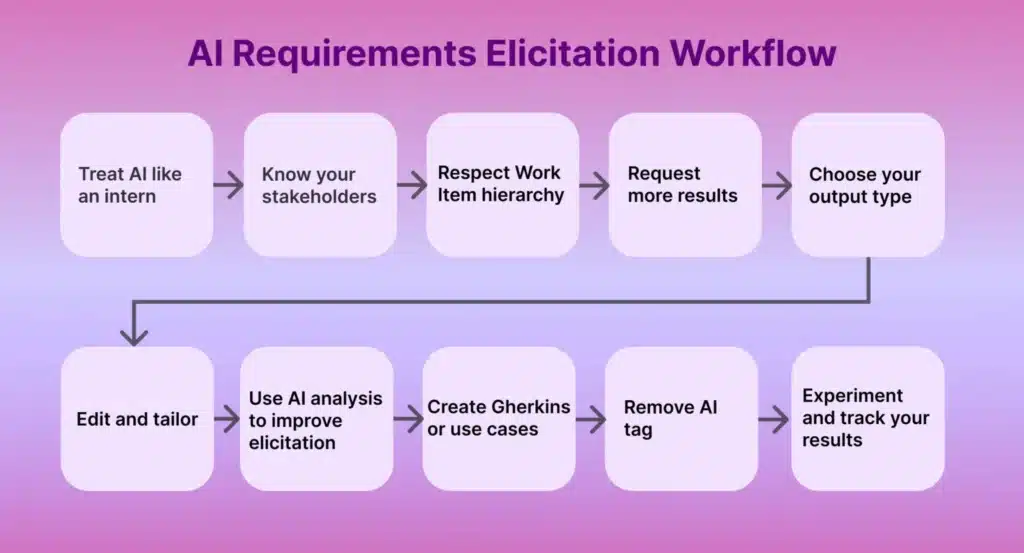
- Requirements Traceability: Maintaining links between requirements, design elements, and test cases can be challenging with more complex software projects.
- Versioning: Keeping track of requirement changes and updates over time. Using robust version and variant management tools can help you keep track of work items and documentation.
- Tool integration: Ensuring requirements management tools work seamlessly with other development tools. The best tools you can use are the ones that are natively integrated into existing industry standard ALM tools like Azure DevOps. They avoid the pitfalls of .
- Requirements Validation: Verifying that requirements are feasible, necessary, and aligned with business goals.
- Communication: Effectively conveying requirements to all team members and stakeholders.
- Adapting to Project Methodologies: Teams in different industries and disciplines use different methodologies. For example, software teams use Agile, business analysts (BAs) follow BABOK, healthcare teams often implement Lean Six Sigma, and manufacturing teams utilize APQP (Advanced Product Quality Planning) methodologies. You can adapt to these pitfalls by choosing requirements management tools that can adapt to any methodology and even provide process templates for your work.
Addressing these challenges requires a combination of robust requirements management processes, effective tools, skilled personnel, and best practices (discussed below) that can guide your project to completion.
6. Why are Requirements Management Tools Necessary?
Before the software tools became common, requirements management was done with manual tools like using spreadsheets, documents, and physical meetings to gather, document, and track project requirements, which led to version control and stakeholder misalignment issues. However, it was still manageable.
But these days, the complexity of modern products and services is exploding. Even a modern car has as many as a 100 million lines of code, and things are getting even more complex.
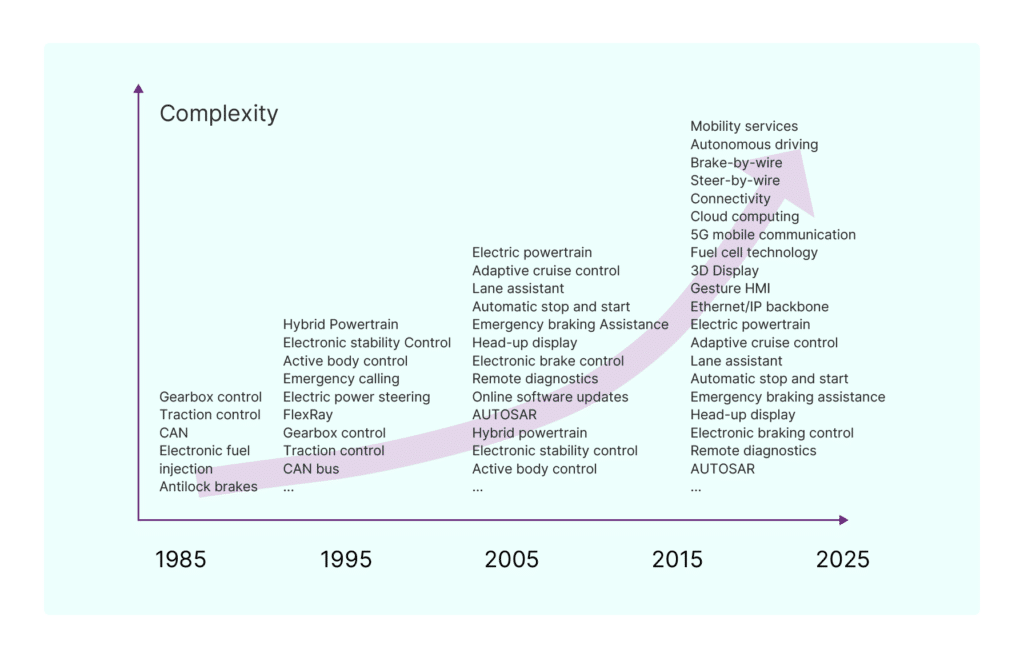
This increase in complexity is seen across industries. Product complexity is rising across industries. Currently, 92% of engineers are reporting increases in complexity over 5 years. The increase in complexity is driven by consumer demand, distributed remote workforces, regulations, increased competition, and the drive to miniaturization. Supply chain complexity is also rising due to geopolitical causes and increasing demand for variants of products.
In such a complex environment, companies need requirements management software tools to manage at-scale product, project, and service development. Requirements management tools are necessary to centralize, organize, and track requirements throughout a project’s lifecycle. They improve collaboration, traceability, and change management, reducing errors and enhancing project success.
7. What is AI Requirements Management?
Requirement management using AI leverages artificial intelligence to automate and enhance the process of capturing, analyzing, and tracking project requirements. It uses machine learning and natural language processing to improve accuracy, efficiency, and collaboration in requirements engineering.
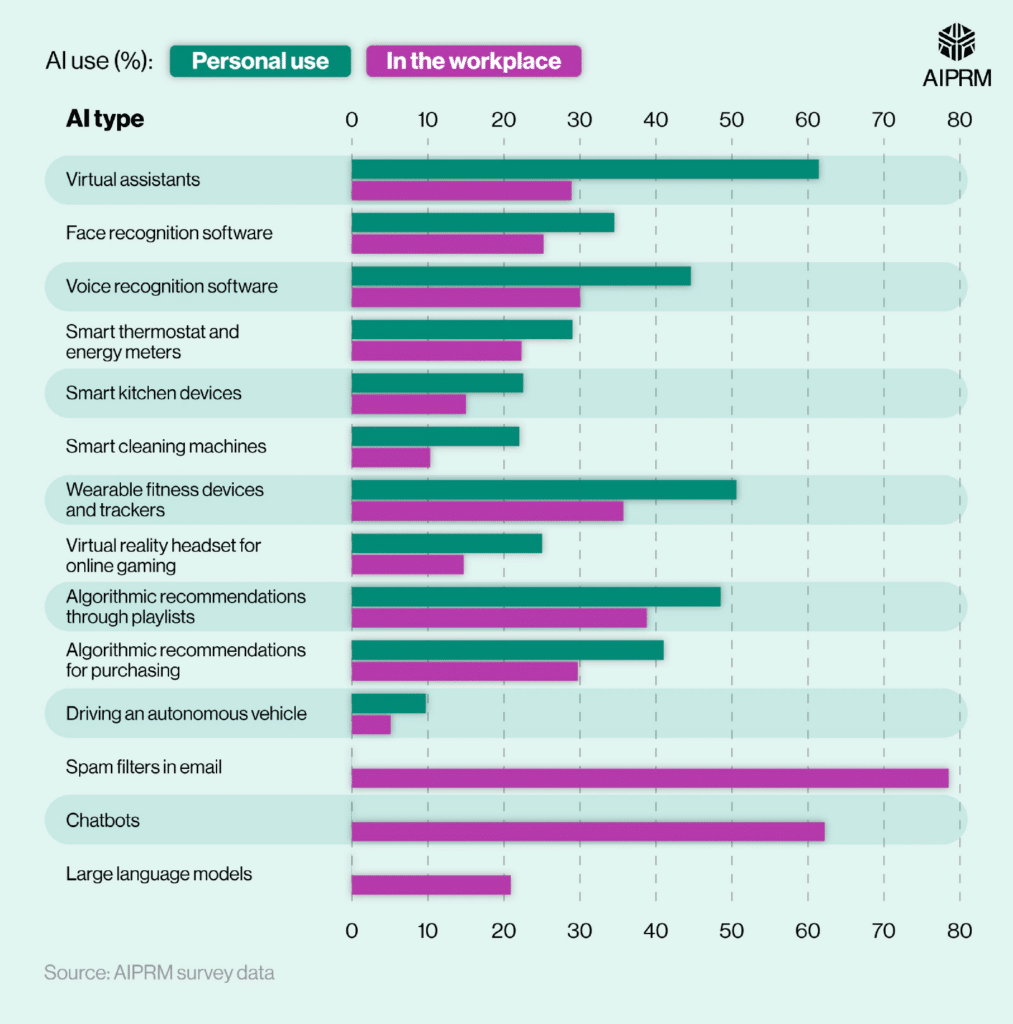
The rise in product complexity and competition is making it inevitable that companies turn to technologies that give them an edge. These benefits filter down to the workforce. A study showed that 61% of workers say that AI enhances their efficiency and productivity. In another study, 60% of knowledge workers said AI allowed them to improve their work-life balance.
Within specific industries, AI tools are transforming entire industries. For instance, in the software development space, AI requirements management tools are proliferating.
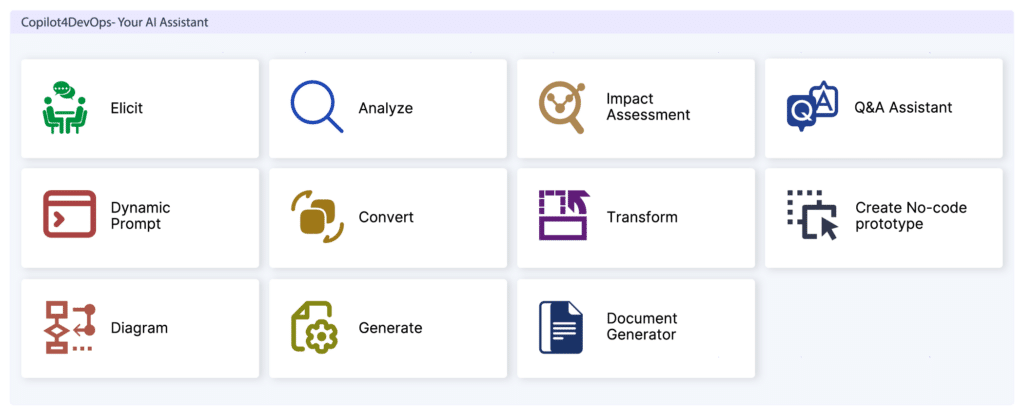
The most noteworthy of these is the award-winning Copilot4DevOps, which accelerates delivery, reduces manual effort, enhances accuracy, and ultimately cuts . It enables one-click generation of requirements like features, bugs, test scripts, pseudocode, and Gherkin. DevOps professionals can generate high-quality SOPs, professional documents, and diagrams using prompts.
Teams can also analyze requirement quality, assess the impact of changes, and use prompt-based functions to complete complex analytical tasks in days instead of weeks.
8. What is the Best Requirements Management Tool?
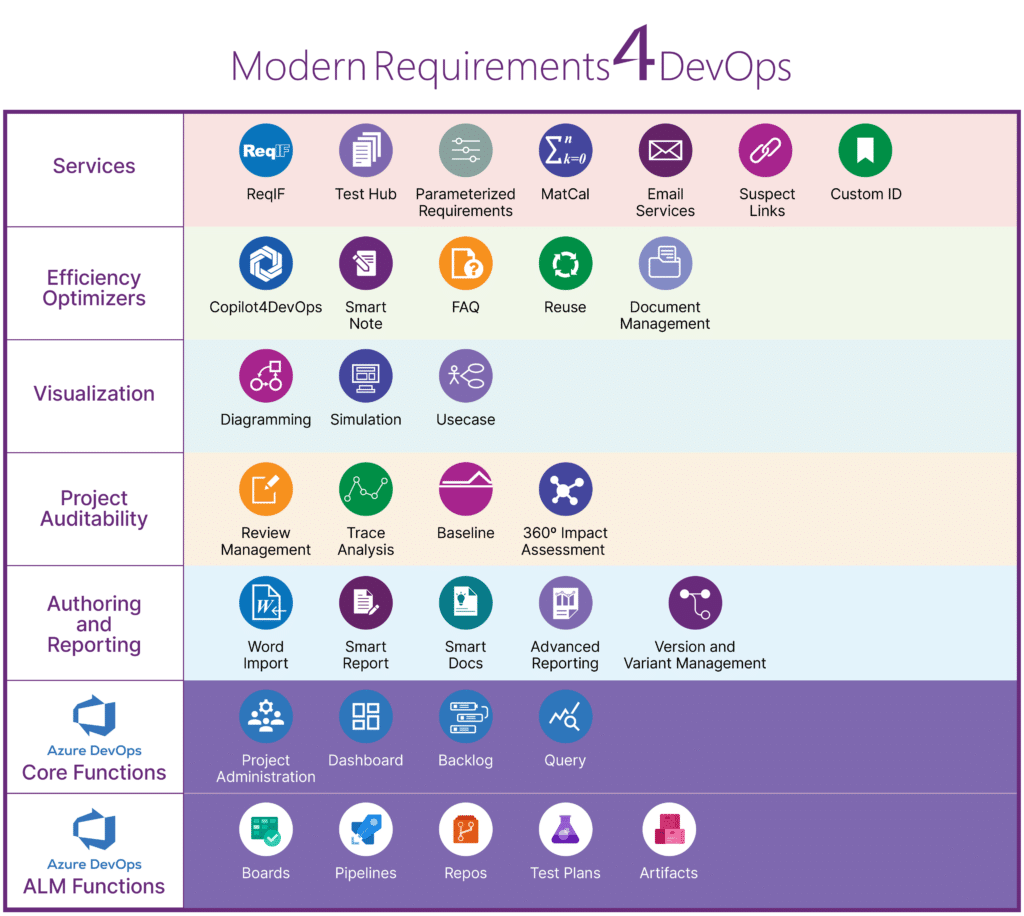
Modern Requirements4DevOps is a leading requirements management solution that seamlessly integrates with Azure DevOps, transforming it into a single source of truth. Some of its key features include:
- Smart Docs: MS Office-like documentation tool to document, create, and edit requirements within Azure DevOps.
- Trace Analysis: End-to-end requirements traceability and two different traceability matrix options within ADO.
- Document Management System: Seamless uploading, downloading, and foldering of documents within Azure DevOps.
- Version/Variant Management: Track and manage versions of work items and variants of product work items.
- Copilot4DevOps: Game-changing AI requirements management tool that allows teams to create requirements, test scripts, and pseudocode from existing work item data, analyze requirements for quality, and modify system prompts with detailed custom instructions.
By automating requirements management processes and eliminating manual processes, Modern Requirements4DevOps supports teams in a variety of industries like manufacturing, automotive, defense, government, healthcare, medical devices, and more.
Modern Requirements4DevOps has received recognition for its user-friendly interface and versatile features. It has been ranked as the top-class requirements management company several years in a row in categories like product experience, service experience, strategy and innovation, and more.
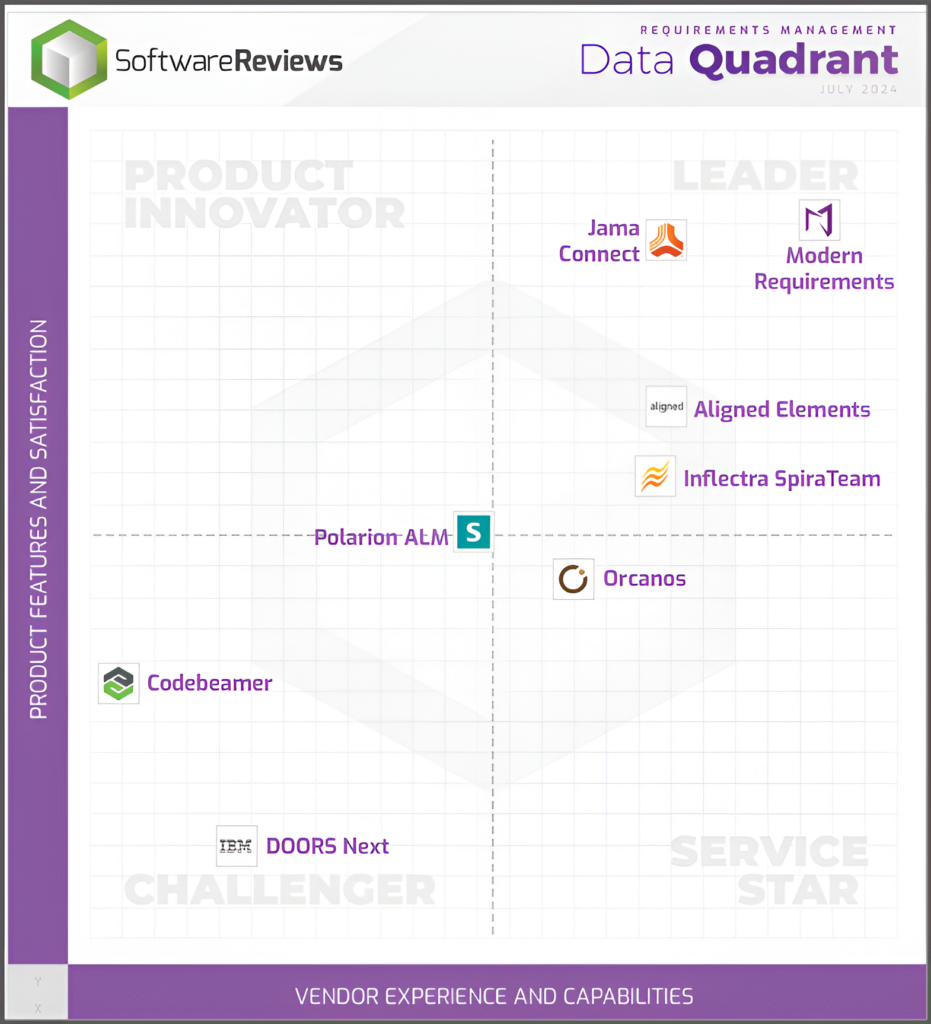
In the 2024 Requirements Management Data Quadrant Awards from SoftwareReviews, Modern Requirements4DevOps:
- Ranked highest and received the Gold Medal for the fourth consecutive year
- Achieved an overall Composite Score of 8.9/10
- Received an outstanding +98 Net Emotional Footprint score
9. How Requirements Management Holds Everything Together
Effective requirements management is vital for project success across industries and requirements management tools are increasingly indispensable parts of this process. With growing product complexity, the right tools, AI integration, and well-structured and trained teams, requirements management is determining the future of product and service development.

